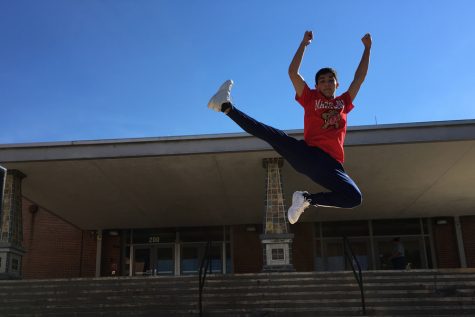It is frowned upon to give students coffee in school because there are side effects to the delicious drink. Unlike the propaganda that schools have taught us, coffee is actually a great beverage for students to drink.
At Middletown High School, coffee was sold for about a week until people realized that they were giving caffeine to teenagers. Contrary to the myths of coffee, it can effectively help teenagers work harder during the school day.
MHS should sell coffee again because the positive effects overcome the negative effects tremendously.
Coffee has been proven in many studies to be good for memory, visual attention, alertness, memory and mood.
Coffee became popular in 1773 during the Boston Tea Party. Switching from drinking tea to coffee was considered the patriotic thing to do.
The reason coffee is so popular is because it helps overcome sleep inertia.
Sleep inertia is defined as a “decline in motor dexterity and a subjective feeling of grogginess immediately following an abrupt awakening,” or the scientific term for the moment you want to hit the snooze button.
To defeat sleep inertia and escalate the levels of alertness, caffeinated coffee is often drunken at the awakening point of the day.
To avoid decreasing the amount of sleep hours a student gets each night, coffee should only be sold from 7:00 a.m. to 10:45 a.m.
It will be least effective at these times because caffeine has a half-life of approximately Six hours, so if you drank a cup of coffee with around 150mg of caffeine, after about Six hours, there would only be 75mg left in your system and you would be feeling half the effect. Six hours after that, you would only have about 37.5 mg. in your body and would be feeling only a quarter of the original effect.
There are few negatives to coffee, but if ignorance to them occurs, they could easily affect the body significantly.
Caffeine is known to have a mild stimulant effect. This means that in adolescents, it could stunt growth.
Coffee causes withdrawal symptoms if a person is to stop drinking it abruptly; however, “these are usually mild, of short duration, and can be avoided by gradually reducing caffeine intake.”
According to a Center for Disease Control study in 2011, about 57.5% of high school students drink caffeinated beverages daily.
In a 2014 study by the CDC, 73% of high school students drink caffeinated beverages daily.
Considering these studies, most of high school students already drink caffeine outside of school so the chances of an abrupt stop of drinking coffee are very low.
Some Middletown High School students thought that selling coffee would be a bad idea.
“We should focus on the [cafeteria] food first then we can incorporate more into the food and drink program,” said MHS freshman Cooper Miser.
MHS freshman Tristan Bowman added that students should be able to bring in coffee from home if they want it during school.
Other students, like MHS junior Robert Thomas, think it would be a great idea.
“People come in the morning and are doing homework and are sleeping,” said Thomas. “They could come to school, get their coffee and be able to stay awake during classes.”
“It would improve learning because we would be awake at 7:30 A.M.,” said junior Claudia Hall.




